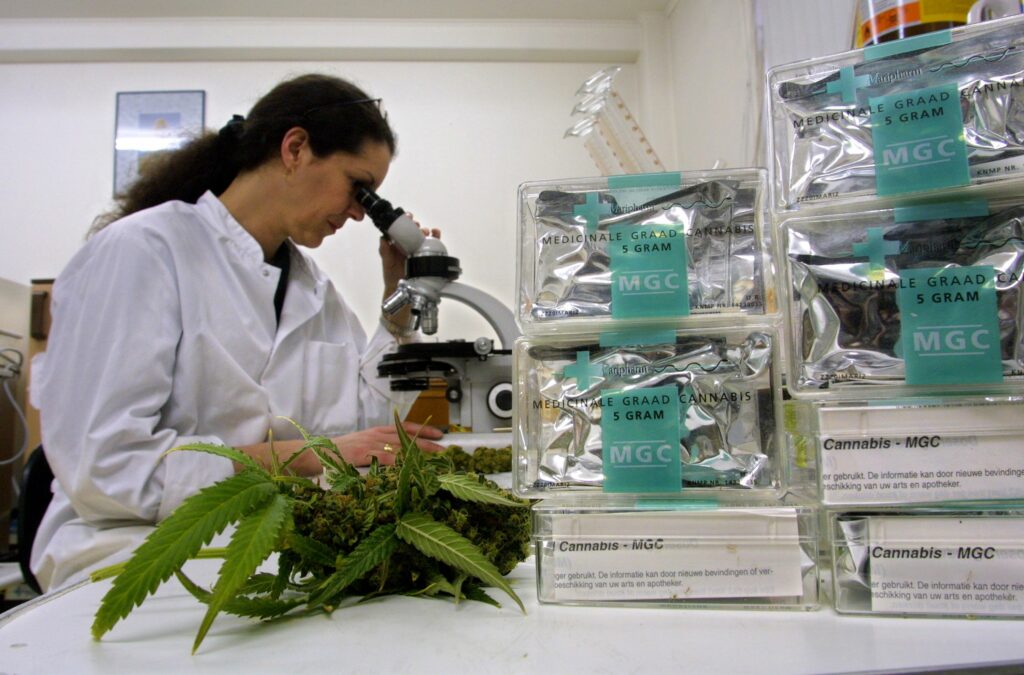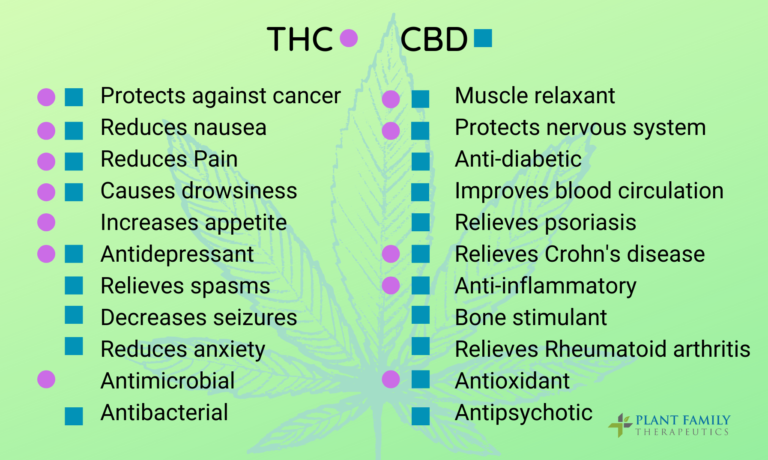This website requires you to be 21 years or older to enter. Please confirm your age below to continue.

What is anxiety?
When you think of anxiety, you may relate it to the stress of making a deadline, taking a test, or when making an important decision. In this way, occasional stress or anxiety is an expected part of life that everyone feels now and then. But anxiety disorders involve more than temporary worry or fear. For people with anxiety disorders, the fear is not temporary and can be overwhelming. Their worries are excessive and frequent. These may be sudden and repeated periods of intense fear when there is no threat of danger. The symptoms can interfere with daily activities such as job performance, schoolwork, and relationships. These people tend to avoid places or situations to prevent these feelings and, unfortunately, social isolation and depression are common outcomes.
There are several types of anxiety disorders, including generalized anxiety disorder, panic disorder, and various phobia-related disorders. Anxiety disorders are the most common and pervasive mental disorders in the United States. According to the Anxiety and Depression Association of America, anxiety disorders affect 40 million Americans aged 18 and older—or 18.1% of the population—every year.
However, only about 37% of the 40 million Americans with an anxiety disorder receive treatment. This may be due to misdiagnosed or undiagnosed anxiety, lack of access to health care services, or an aversion to conventional treatments. Or simply the anxiety “fear” of approaching the perceived problems.
Anxiety is both an emotional and a physiological reaction to perceived danger. It’s characterized by overwhelming feelings of general fear, dread, and uneasiness, to sheer panic, as well as a continuum of physical responses from increased heart rate and sweating to running from the perceived threat. Anxiety can be crippling because you can struggle with feeling weak and unable to deal with life – because you can’t stop being anxious.
There is now new hope
The cause of anxiety had been unknown until recently when researchers found the origin of anxiety in the hippocampus of mice. Now anxiety diagnoses have something real behind them. With anxiety, you get increased levels of cortisol and adrenaline but, that is the secondary effect. This discovery takes us to where it starts. This has far-reaching effects on how we look at and treat anxiety in

humans. Neuroscientists at Columbia University Medical Center and University of California San Francisco collaborated on a study and discovered certain brain cells in the hippocampus of mice fire when the mice become anxious, and those cells would trigger certain anxiety behaviors.
This research gives us some evidence that anxiety is controlled by certain cells on the brain and is not based on how strong of a person you are.
This is exciting because with this information scientist can develop new approaches to treating anxiety that targets the cell or receptor specifically. Unfortunately, we are a long way off from developing that treatment.
What are the current treatments?
There are a few treatment options available for anxiety and anxiety-related disorders. These treatments can be broadly categorized as psychotherapy, medications, and complementary and alternative therapies.
A standard way of treating anxiety is counseling. This can include cognitive-behavioral therapy (CBT), psychotherapy, or a combination of therapies. This type of psychotherapy aims to recognize and change harmful thought patterns that form the foundation of anxious and troublesome feelings. In the process, practitioners of CBT hope to limit distorted thinking and change the way people react to objects or situations that trigger anxiety.
Medications are sometimes used in conjunction with psychotherapy. The most commonly prescribed medications are generally safe, although they do have side effects to consider. Medicines that might control some of the physical and mental symptoms include antidepressants, benzodiazepines, tricyclics, and beta-blockers.
Complementary and Alternative Therapies (natural therapies) can be used in conjunction with conventional therapies to reduce the symptoms of anxiety. There is a growing interest in these types of therapies since they are non-invasive and can be useful to patients. They are typically not intended to replace conventional therapies but rather can be an adjunct therapy that can improve the overall quality of life of patients. Some natural therapies are meditation, yoga or tai chi, progressive relaxation, guided imagery, and deep breathing exercises.
Can cannabis THC help?
Most cannabis consumers know that it can be quite chill, but there is another side of cannabis that can cause the opposite effects, where you can end up with anxiety and paranoia. Cannabis sativa can cause those effects. Cannabis sativa has been labeled as being energizing to the mind, whereas cannabis indica are known for being more body relaxing.
Generally, the side effects of the sativa plant are from over-indulging or too high a dose. When using cannabis for anxiety, research shows lower doses of cannabis help anxiety, whereas higher doses can cause or worsen anxiety. It is generally recommended to start with a low dose such as 2.5mg of THC and gradually increase the dose, adding just another milligram or two until you feel optimal symptom relief.
Why is that?
Cannabis is biphasic- different doses equal different effects. It’s easy to overmedicate if you are unfamiliar with cannabis. Therefore, it is beneficial to purchase your medical cannabis from a knowledgeable dispensary where you can sit down and get some education and have a plan based on your specific needs. For instance, most people don’t know that CBD can tame, balance, or enhance the effects of THC due to its biphasic properties and that THC taken by itself can increase or worsen the symptoms of your condition.
CBD to the rescue!
There has been a vast amount of studies done on CBD and all its outstanding benefits. Research shows CBD is effective in treating several types of anxiety disorders including, generalized (GAD), post-traumatic stress disorder (PTSD), panic disorder (PC), obsessive-compulsive disorder (OCD), and social anxiety disorder (SAD).
CBD is nonaddictive and nonintoxicating, meaning it does not make you feel stoned like THC can. For this reason, many people are comfortable using it to soothe their anxiety.
Another great thing about CBD is how it can help remove the buildup of plaque on the brain that THC can leave behind. It can also help clear away the plaque that causes Alzheimer’s Disease. This is important because the hippocampus is an area of the brain where we form memories. So, here we have a connection between anxiety and memory.

Dosing
Dosing with CBD is not the same as dosing with THC. As mentioned above, THC is definitely a “start low and go-slow” medication. With CBD, you do not have the same side effects. In fact, the most common temporary side effects are feeling over relaxed and possibly having an upset stomach. With CBD, a lower dose may be slightly stimulating, whereas a medium to higher dose is relaxing to possible sedation.
What about terpenes?
Terpenes are the aromatic and also a healing part of the cannabis plant. For instance, when you are smelling black pepper, you are smelling caryophyllene – an anti-inflammatory that is found in cannabis. There are several terpenes found within the cannabis family, and they all have benefits just like the cannabinoids THC and CBD. The terpenes have qualities or benefits that may make you feel energized, relaxed, sleepy, or happy. When these terpenes are combined with the cannabinoids, they produce what is called the entourage effect.
The best terpenes for anxiety are limonene (smells like lemon), myrcene (musky earth smell), caryophyllene (smells like black pepper), and linalool (smells like lavender).
Limonene is good for an uplifted mood, and it is relaxing. Research shows limonene reduces stress and anxiety.
Myrcene is known for the body high or “couch-lock”, but studies show when combined with limonene and pinene, it is calming both mentally and physically without being too over relaxing.
Caryophyllene is an antianxiety demonstrated through research as well as an anti-inflammatory.
Linalool has been widely researched for its antianxiety properties. Studies show when taken with THC or CBN cannabinoids, it is a beneficial sedative.
Summing it up
Anxiety disorder can be a debilitating condition that affects millions of Americans. Research shows some terpenes and the cannabinoids THC, but more so CBD, can help with decreasing, and in many cases, stop the symptoms. The key to this is balancing your cannabis medication with your endocannabinoid system. PFT has the knowledge to help you navigate through your journey safely and effectively.
References
Beal, C., Broyd, S., Chye, Y., Suo, C., Schira, M., Galettis, P., Martin, J., Yucel, M., & Solwij, N. (2018). Prolonged cannabidiol treatment effects on hippocampal subfield volumes in current cannabis users. Cannabis and cannabinoid research, 3(1)94-107 https://doi.org/10.1089/can.2017.0047
Blessing, E. M., Steenkamp, M. M., Manzanares, J., & Marmar, C. R. (2015). Cannabidiol as a Potential Treatment for Anxiety Disorders. Neurotherapeutics : the journal of the American Society for Experimental NeuroTherapeutics, 12(4), 825–836. https://doi.org/10.1007/s13311-015-0387-1
Childs, E., Lutz, J. A., & de Wit, H. (2017). Dose-related effects of delta-9-THC on emotional responses to acute psychosocial stress. Drug and alcohol dependence, 177, 136–144. https://doi.org/10.1016/j.drugalcdep.2017.03.030
Facts & statistics. Anxiety and depression association of America website. https://adaa.org/understanding-anxiety/facts-statistics Accessed August 5, 2021.
Gulbransen, G., Xu, W., & Arroll, B. (2020). Cannabidiol prescription in clinical practice: an audit on the first 400 patients in New Zealand. BJGP open, 4(1), bjgpopen20X101010. https://doi.org/10.3399/bjgpopen20X101010
Hyman, S. M., & Sinha, R. (2009). Stress-related factors in cannabis use and misuse: implications for prevention and treatment. Journal of substance abuse treatment, 36(4), 400–413. https://doi.org/10.1016/j.jsat.2008.08.005
Jimenez, J. C., Su, K., Goldberg, A. R., Luna, V. M., Biane, J. S., Ordek, G., Zhou, P., Ong, S. K., Wright, M. A., Zweifel, L., Paninski, L., Hen, R., & Kheirbek, M. A. (2018). Anxiety Cells in a Hippocampal-Hypothalamic Circuit. Neuron, 97(3), 670–683.e6. https://doi.org/10.1016/j.neuron.2018.01.016
Koenders, L., Lorenzetti, V., de Haan, L., Suo, C., Vingerhoets, W., van den Brink, W., Wiers, R. W., Meijer, C. J., Machielsen, M., Goudriaan, A. E., Veltman, D. J., Yücel, M., & Cousijn, J. (2017). Longitudinal study of hippocampal volumes in heavy cannabis users. Journal of psychopharmacology (Oxford, England), 31(8), 1027–1034. https://doi.org/10.1177/0269881117718380
Lutz, B., Marsicano, G., Maldonado, R., & Hillard, C. J. (2015). The endocannabinoid system in guarding against fear, anxiety, and stress. Nature reviews. Neuroscience, 16(12), 705–718. https://doi.org/10.1038/nrn4036
Marcus, D., Bedse, G., Gaulden, A., Ryan, J., Kondev, V. et al. (2020). Endocannabinoid signaling collapse mediates stress-induced amygdala-cortical strengthening. Neuron, 105(6),1062-1076 https://doi.org/10.1016/j.neuron.2019.12.024
Ruehle, S., Rey, A. A., Remmers, F., & Lutz, B. (2012). The endocannabinoid system in anxiety, fear memory and habituation. Journal of psychopharmacology (Oxford, England), 26(1), 23–39. https://doi.org/10.1177/0269881111408958
Shannon, S., Lewis, N., Lee, H., & Hughes, S. (2019). Cannabidiol in Anxiety and Sleep: A Large Case Series. The Permanente journal, 23, 18–041. https://doi.org/10.7812/TPP/18-041
Stoner, SA. (2017). Effects of Marijuana on Mental Health: Anxiety Disorders. Alcohol & Drug Abuse Institute, University of Washington. URL: http://adai.uw.edu/pubs/pdf/2017mjanxiety.pdf.
University of Illinois at Chicago. (2017, June 2). Low-dose THC can relieve stress; more does just the opposite. ScienceDaily. www.sciencedaily.com/releases/2017/06/170602155252.htm